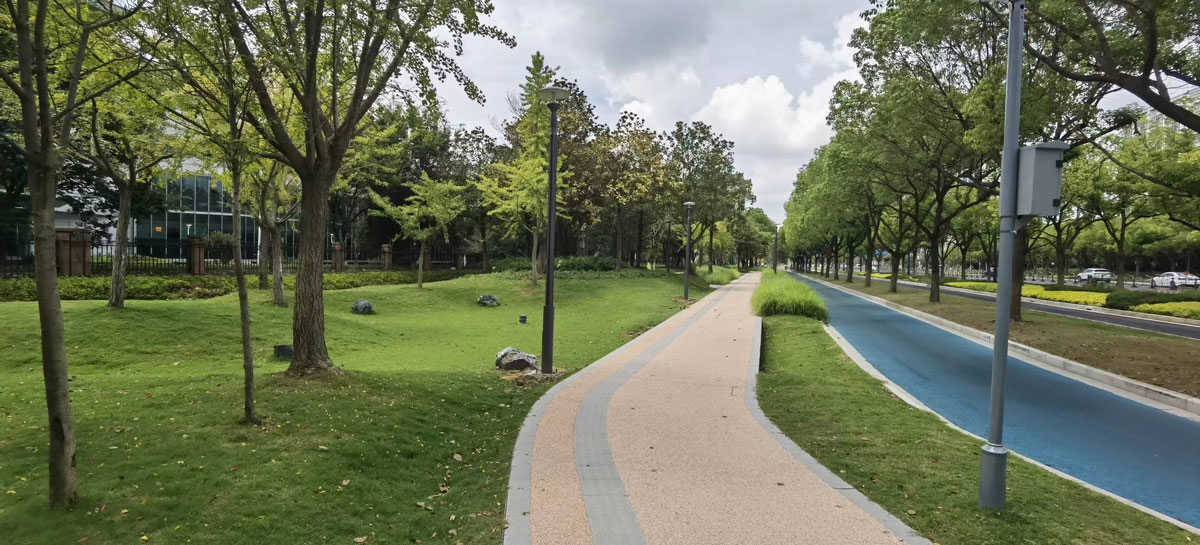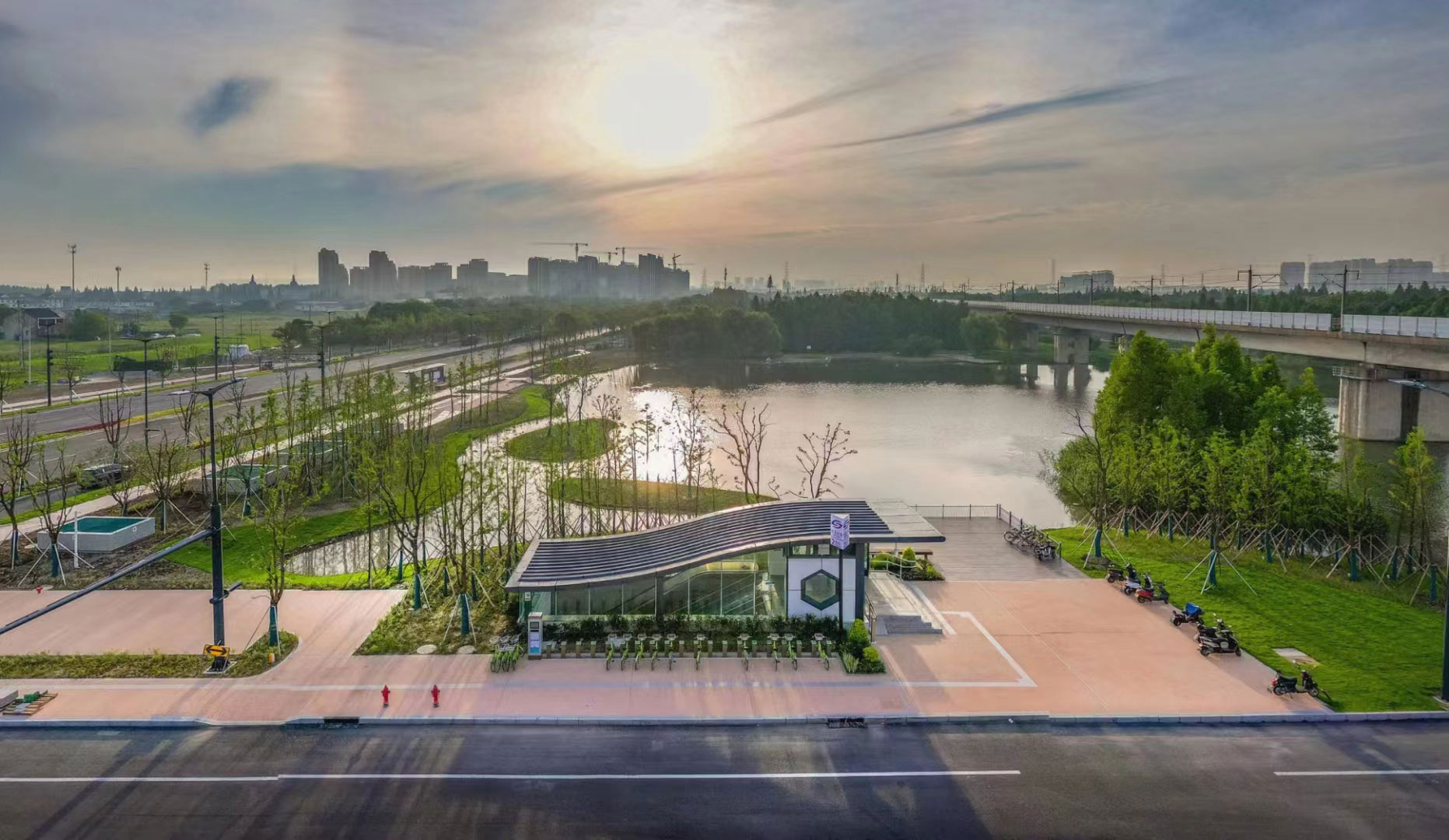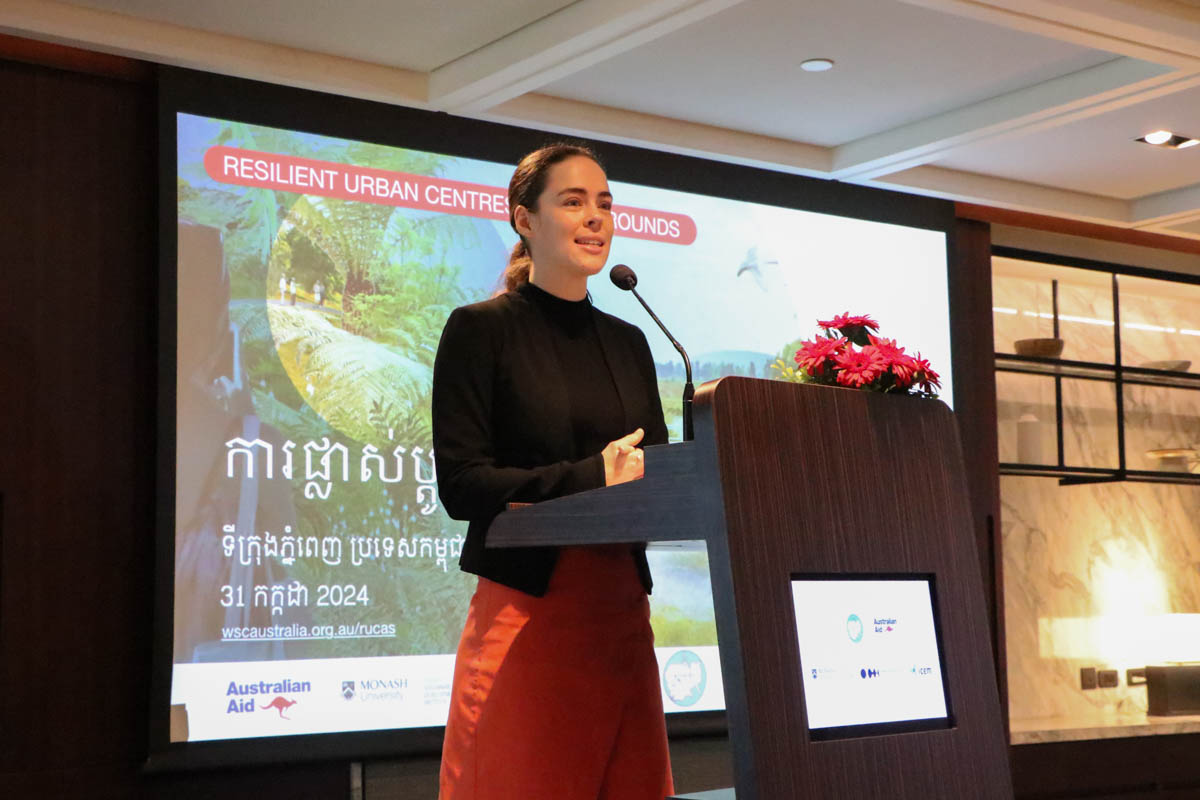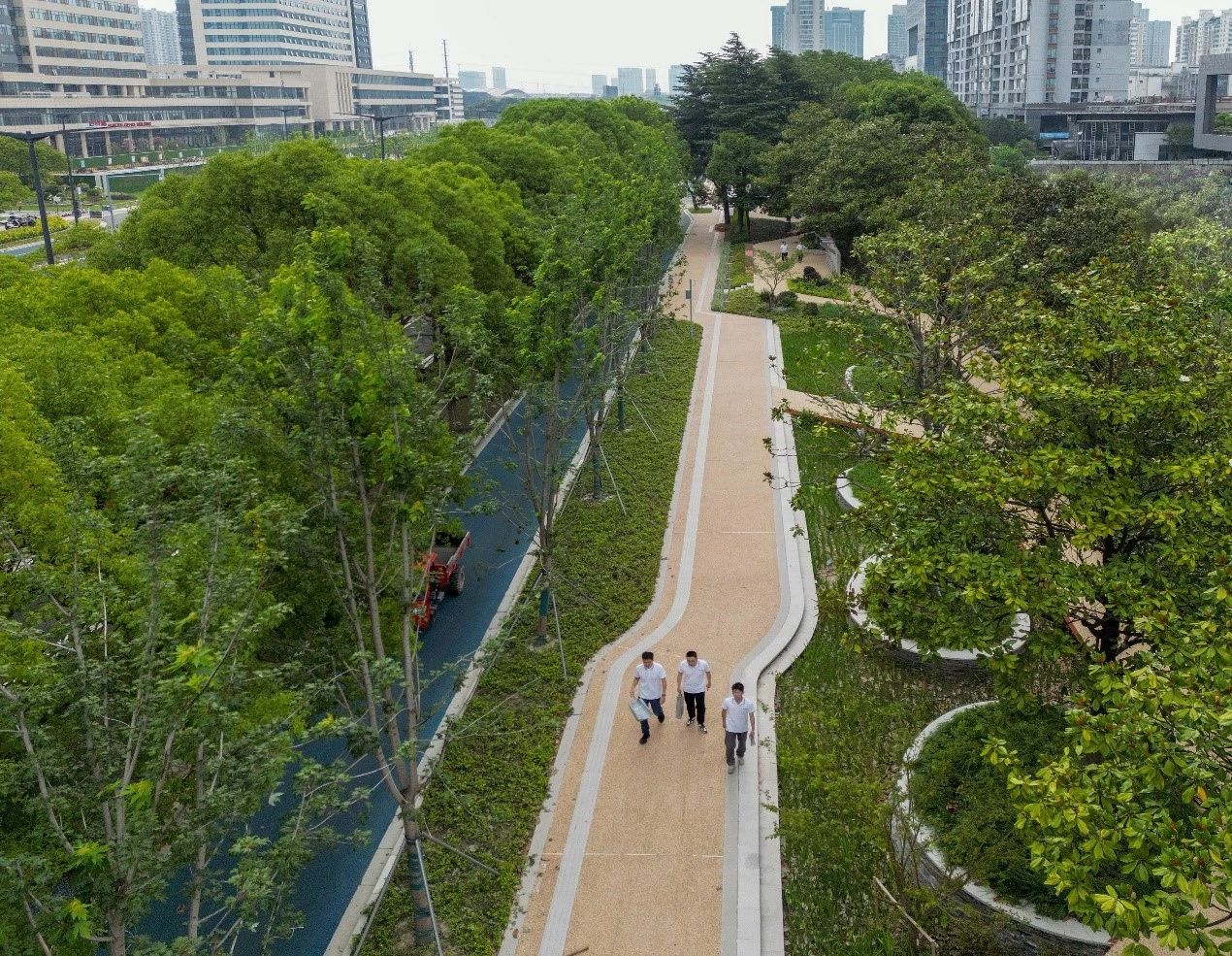September 18, 2024
/
The Kunshan S1 metro corridor project, led by our Chief Innovation Officer Dr Jianbin Wang, has achieved Platinum certification from SITES, the Sustainable Sites Initiative—the highest rating in their system. The project's low-carbon sponge system and polder-scale ecological restoration received high praise from the reviewers.
Dr Wang collaborating with Dr Shan Zou, Dr Peter Breen, Prof Tony Wong and Ms Tiange Wu developed the ecological and sponge city planning strategy to transform a 36 km urban corridor traversing 8 polders covering 80 km2 along the Kunshan S1 metro line at a citywide scale. Developed for the Kunshan Transport Development Group, the strategy established a number of distinctive polder systems, embedding integrated water and ecological solutions. Using the metro as the central spine, this approach connects the 8 unique polders and facilitates people movement via the metro subway. The strategy serves as the foundation to inform and guide the subsequent planning and design development of the corridor undertaken by local design institute (Suzhou Design Institute of Landscape Architecture).

Distributed retention
Each metro station is envisaged to function as a gateway park, radiating out to the entire polder based on Kunshan’s unique canal network and urban fabric. Instead of a traditional Transit-Oriented Development (TOD) approach, this new planning strategy encourages people to move out of the stations and explore larger parts of the cityscape, restoring Kunshan into a dynamic polder city. The metro corridor will eventually become a necklace of polder parks, envisioning future connectivity and enhancing people movement through modern transportation like never before.

Station park
The Platinum certification from SITES reflects the project’s commitment to sustainability, improving health and wellness, and protecting and restoring nature. This rating system guides, evaluates and certifies sustainability in the design, development and management of landscapes and other outdoor spaces. The aims are to promote climate regulation, protect air and water quality, control flooding, improve resilience, enhance biodiversity, conserve resources and reduce waste.

Kunshan S1 metro corridor connecting Suzhou to Shanghai

Western New Town ecological sponge city strategy
Work is already underway. While the entire corridor restoration will take many years, some initial elements are already done in response to the open cut construction around each metro station. The Kunshan Transport Development Group has created station parks, rain gardens, flower swales, linear pocket parks, bus stop rain gardens and distributed flood retention green spaces.




